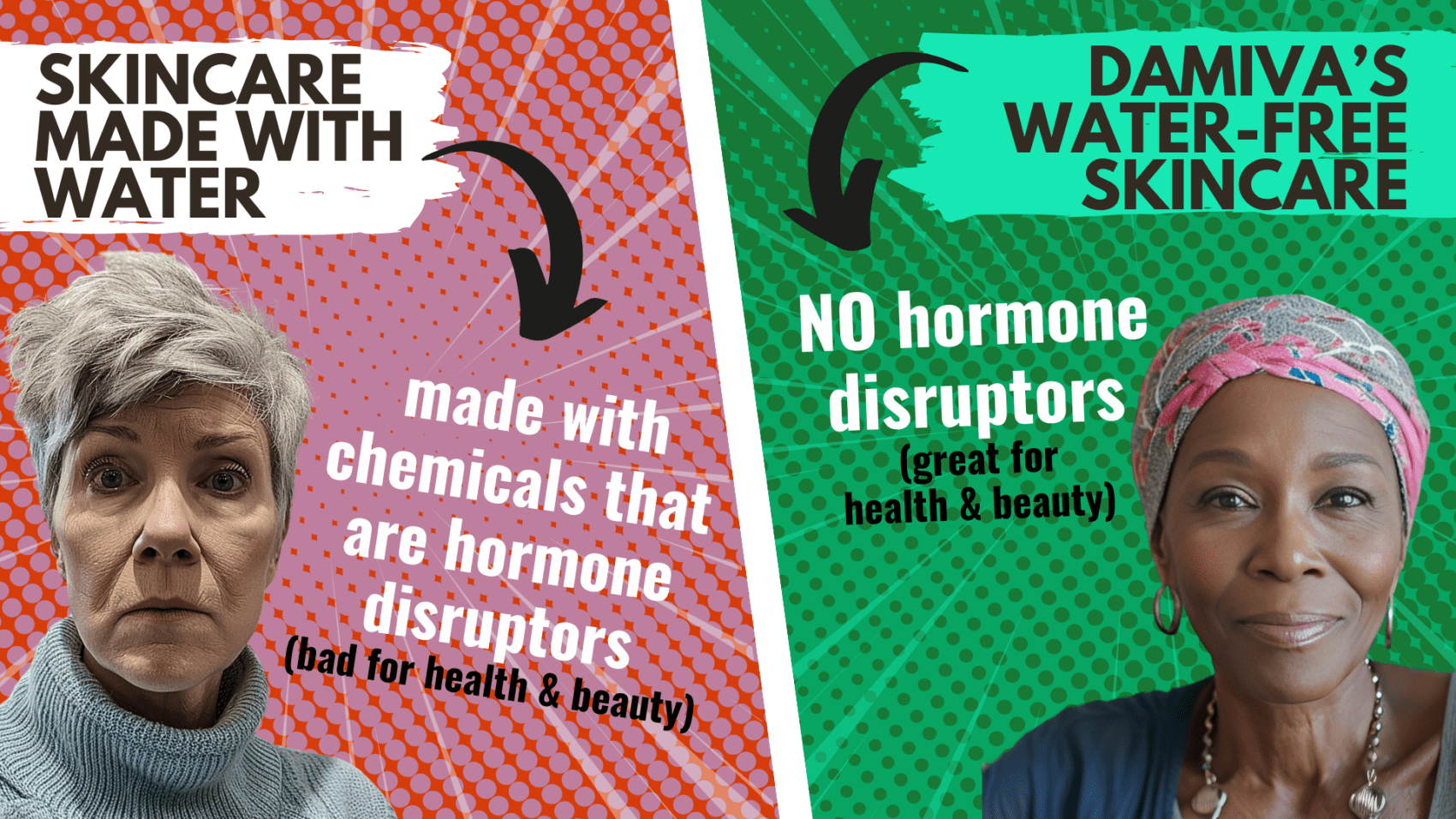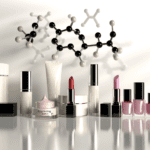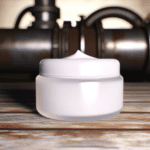Introduction
Overview of the Issue
In today’s world, personal care products are an integral part of our daily routines. Among these, shampoo is a staple that most people use regularly without a second thought. However, recent research has raised concerns about the potential impact of certain ingredients found in shampoos on our hormonal health. These ingredients, known as endocrine disruptors, can mimic or interfere with the body’s natural hormones, leading to a range of health issues.
Endocrine-disrupting chemicals (EDCs) are not just limited to industrial pollutants or pesticides; they are also found in many everyday products, including shampoos. Ingredients such as parabens, phthalates, sulfates, and synthetic fragrances are commonly used in shampoos and have been identified as potential endocrine disruptors. These chemicals can enter the body through the skin and scalp, potentially leading to hormonal imbalances.
Why This Matters to You
Understanding the potential risks associated with the ingredients in your shampoo is crucial for several reasons. Firstly, hormones play a vital role in regulating various bodily functions, including growth, metabolism, and reproductive health. Even minor disruptions in hormone levels can have significant effects on your overall well-being. For women, in particular, hormonal imbalances can lead to issues such as irregular menstrual cycles, fertility problems, and an increased risk of certain cancers.
Moreover, the impact of endocrine disruptors is not limited to immediate health concerns. Long-term exposure to these chemicals can lead to chronic health issues, including metabolic disorders, immune system dysfunction, and developmental problems in children. Given that shampoo is a product used frequently and over a long period, the cumulative exposure to these harmful chemicals can be substantial.
In addition to personal health, there is also a growing awareness of the environmental impact of these chemicals. Many of the ingredients found in shampoos are not biodegradable and can accumulate in water systems, affecting wildlife and ecosystems. By making informed choices about the products you use, you can contribute to a healthier environment.
In summary, being aware of the potential hormonal effects of your shampoo is essential for maintaining your health and well-being. By understanding the ingredients and their potential risks, you can make more informed choices and take steps to reduce your exposure to harmful chemicals. This article will delve deeper into the science behind endocrine disruptors, the specific ingredients to watch out for, and practical tips for choosing hormone-friendly shampoos.

Popular Read: Endocrine Disruptors in Skincare: What You Need to Know
Understanding Hormones and Endocrine Disruptors
What Are Hormones?
Hormones are chemical messengers produced by endocrine glands and released into the bloodstream. They regulate various physiological processes, including growth, metabolism, and reproduction. Hormones act in very small amounts, and even minor fluctuations can have significant effects on the body. Examples of hormones include insulin, which regulates blood sugar levels, and estrogen, which plays a crucial role in female reproductive health.
The Role of Hormones in Women’s Health
Hormones are particularly vital in women’s health, influencing menstrual cycles, pregnancy, and menopause. Estrogen and progesterone are key hormones that regulate the menstrual cycle and support pregnancy. Imbalances in these hormones can lead to conditions such as polycystic ovary syndrome (PCOS), infertility, and menopausal symptoms. Therefore, maintaining hormonal balance is essential for overall well-being and reproductive health.
What Are Endocrine Disruptors?
Endocrine disruptors are chemicals that can interfere with the endocrine system. These substances can mimic, block, or alter the natural hormones in the body, leading to a range of health issues. Endocrine disruptors can be natural or synthetic and are found in various everyday products, including cosmetics, plastics, and pesticides. They can enter the body through ingestion, inhalation, or skin absorption.
Common Sources of Endocrine Disruptors
Endocrine disruptors are pervasive in our environment. Here are some common sources:
- Cosmetics and Personal Care Products: Many shampoos, lotions, and makeup products contain chemicals like parabens and phthalates, which are known endocrine disruptors.
- Plastics: Bisphenol A (BPA) and phthalates are often found in plastic containers, bottles, and packaging materials.
- Pesticides: Chemicals used in agriculture, such as atrazine, can act as endocrine disruptors.
- Household Products: Flame retardants and cleaning agents may contain endocrine-disrupting chemicals.
- Food and Beverage Packaging: BPA and other chemicals can leach into food and drinks from packaging materials.
Understanding the sources and effects of endocrine disruptors is crucial for making informed choices to minimize exposure and protect your hormonal health.

Do you have the most commonly used but toxic, disease bringing chemicals in your skin care? Many chemicals in skincare are hormone disruptors and make menopause symptoms worse.
Find out more…
Ingredients in Shampoo That May Affect Hormones
Parabens
Parabens are a group of synthetic compounds commonly used as preservatives in shampoos and other personal care products. They prevent the growth of bacteria and mold, thereby extending the shelf life of these products. However, parabens can be easily absorbed through the skin and have been found in human tissues, including breast tissue. Studies have shown that parabens can mimic estrogen, a hormone that plays a crucial role in the reproductive system. This mimicry can potentially lead to hormonal imbalances and has been linked to breast cancer and reproductive issues. When checking ingredient labels, look for names like methylparaben, propylparaben, isoparaben, and butylparaben.
Phthalates
Phthalates are another group of chemicals often found in shampoos, particularly those with synthetic fragrances. These chemicals are used to make plastics more flexible and to help fragrances last longer. Phthalates are known endocrine disruptors, meaning they can interfere with the body’s hormone systems. Research has linked phthalate exposure to a variety of health issues, including reproductive problems, developmental issues in children, and even certain cancers. They are often listed under vague terms like “fragrance” on ingredient labels, making them harder to identify and avoid.
Sulfates
Sulfates, such as sodium lauryl sulfate (SLS) and sodium laureth sulfate (SLES), are commonly used in shampoos to create a lathering effect. While they are effective at cleaning the scalp and hair, sulfates can also strip away natural oils, leading to dryness and irritation. More concerning is the potential for sulfates to be contaminated with 1,4-dioxane, a byproduct that is a known carcinogen and can disrupt hormone function. Although the direct link between sulfates and hormonal imbalance is less clear, their potential contamination with harmful byproducts makes them a concern.
Synthetic Fragrances
Synthetic fragrances are used in shampoos to provide a pleasant scent, but they can contain a cocktail of chemicals, including phthalates, which are not always disclosed on the label. These fragrances can act as endocrine disruptors, interfering with hormone function and potentially leading to a range of health issues, from allergies and asthma to reproductive problems. The term “fragrance” on an ingredient list can hide a multitude of chemicals, making it difficult for consumers to know exactly what they are being exposed to.
Other Harmful Chemicals
In addition to parabens, phthalates, sulfates, and synthetic fragrances, shampoos can contain other harmful chemicals that may affect hormones. These include:
- Triclosan: An antimicrobial agent that can disrupt thyroid function and reproductive hormones.
- Formaldehyde and Formaldehyde-releasing agents: Used as preservatives, these chemicals are known carcinogens and can disrupt hormone function.
- Polyethylene Glycols (PEGs): Used as thickeners, they can be contaminated with ethylene oxide and 1,4-dioxane, both of which are harmful to the endocrine system.
By being aware of these ingredients and their potential effects on your hormones, you can make more informed choices about the shampoos you use. Opting for products labeled as “paraben-free,” “phthalate-free,” and “sulfate-free,” or choosing natural and organic alternatives, can help reduce your exposure to these harmful chemicals.
Scientific Evidence Linking Shampoo Ingredients to Hormonal Imbalances
Studies on Parabens and Hormonal Disruption
Parabens are widely used as preservatives in cosmetics, including shampoos. Scientific studies have shown that parabens can mimic estrogen, a hormone that regulates various functions in the body. This mimicry can lead to hormonal imbalances. Research published in *Dermatitis* in 2019 highlighted that parabens are associated with endocrine activity, carcinogens, infertility, and other health issues. The study found that parabens can be absorbed through the skin and accumulate in the body, potentially leading to adverse health effects.
Research on Phthalates and Endocrine Health
Phthalates are another group of chemicals commonly found in shampoos and other personal care products. These chemicals are used to make plastics more flexible and are often included in synthetic fragrances. Phthalates have been linked to a range of health issues, including hormonal imbalances. A study published in *Scientific Reports* found that phthalates are associated with pregnancy loss and adverse obstetrical outcomes. Additionally, research has shown that phthalates can disrupt the endocrine system, leading to reproductive issues and developmental problems in children.
Impact of Sulfates on Hormones
Sulfates, such as sodium lauryl sulfate (SLS) and sodium laureth sulfate (SLES), are commonly used in shampoos for their foaming properties. While sulfates are effective cleansers, they can also be harsh on the skin and scalp. Some studies suggest that sulfates can disrupt the skin’s natural barrier, leading to increased absorption of other harmful chemicals. Although direct evidence linking sulfates to hormonal imbalances is limited, their ability to enhance the penetration of other endocrine-disrupting chemicals raises concerns.
Effects of Synthetic Fragrances
Synthetic fragrances are often added to shampoos to provide a pleasant scent. However, these fragrances can contain a mix of hundreds of chemicals, many of which are not disclosed on the product label. Phthalates are commonly used in synthetic fragrances to make the scent last longer. According to research published in the *Journal of Toxicology and Environmental Health*, exposure to synthetic fragrances can lead to reproductive problems and may affect immune response and cardiovascular function. The study also found that synthetic fragrances could disrupt the hypothalamic-pituitary-gonadal system, which regulates reproductive and immune systems.
In summary, the scientific evidence indicates that several common ingredients in shampoos, such as parabens, phthalates, sulfates, and synthetic fragrances, can potentially disrupt hormonal balance. These findings underscore the importance of being mindful of the ingredients in personal care products and opting for safer alternatives whenever possible.
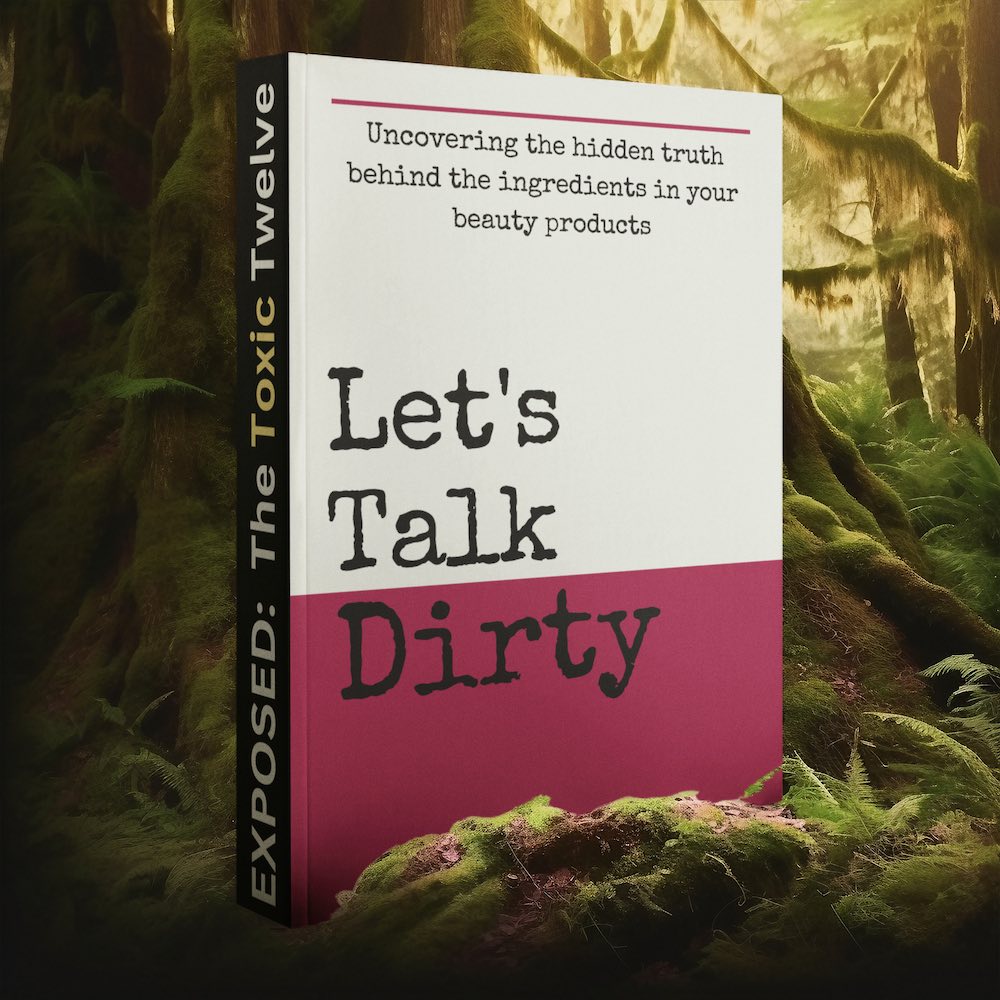
Feeling You Have a Right to Safe Beauty & Fem Care?
If so, it may be time for a change. It starts with knowledge. We have a few suggestions in our new guides.
Symptoms of Hormonal Imbalance to Watch For
Physical Symptoms
Hormonal imbalances can manifest in a variety of physical symptoms that may often be overlooked or attributed to other causes. Here are some key physical signs to be aware of:
- Weight Fluctuations: Unexplained weight gain or loss can be a sign of hormonal imbalance. Hormones like insulin, cortisol, and thyroid hormones play a significant role in regulating metabolism.
- Skin Issues: Acne, dry skin, or other skin conditions can be linked to hormonal changes. For instance, an excess of androgens can lead to acne, while low estrogen levels can cause dry skin.
- Hair Changes: Thinning hair, hair loss, or excessive hair growth in unusual areas can be indicative of hormonal imbalances. For example, high levels of androgens can cause hair thinning in women.
- Menstrual Irregularities: Irregular, heavy, or painful periods can be a sign of hormonal imbalance, particularly involving estrogen and progesterone.
- Fatigue: Persistent tiredness that doesn’t improve with rest can be a symptom of hormonal issues, such as thyroid dysfunction or adrenal fatigue.
- Digestive Problems: Hormones like cortisol and insulin can affect gut health, leading to issues like bloating, constipation, or diarrhea.
Emotional and Mental Symptoms
Hormonal imbalances don’t just affect the body; they can also have a profound impact on emotional and mental well-being. Here are some symptoms to watch for:
- Mood Swings: Sudden and unexplained changes in mood, such as irritability, anxiety, or depression, can be linked to hormonal fluctuations.
- Memory Issues: Difficulty concentrating or memory lapses can be a sign of hormonal imbalance, particularly involving thyroid hormones or cortisol.
- Sleep Disturbances: Insomnia or poor-quality sleep can be related to imbalances in hormones like melatonin, cortisol, and estrogen.
- Anxiety and Depression: Chronic feelings of anxiety or depression can be exacerbated by hormonal imbalances, especially those involving thyroid hormones, estrogen, and progesterone.
- Low Libido: A decrease in sexual desire can be a symptom of hormonal imbalance, often related to low levels of estrogen or testosterone.
Long-term Health Risks
Ignoring the symptoms of hormonal imbalance can lead to more severe health issues over time. Here are some long-term risks associated with untreated hormonal imbalances:
- Reproductive Health Issues: Hormonal imbalances can lead to conditions like polycystic ovary syndrome (PCOS), infertility, and complications during pregnancy.
- Metabolic Disorders: Long-term imbalances in hormones like insulin and cortisol can increase the risk of developing metabolic disorders such as diabetes and obesity.
- Cardiovascular Problems: Hormonal imbalances can contribute to high blood pressure, high cholesterol, and other cardiovascular issues, increasing the risk of heart disease.
- Bone Health: Low levels of estrogen, particularly during menopause, can lead to decreased bone density and an increased risk of osteoporosis.
- Chronic Fatigue Syndrome: Persistent hormonal imbalances can lead to chronic fatigue syndrome, characterized by extreme tiredness that doesn’t improve with rest.
- Mental Health Disorders: Long-term hormonal imbalances can contribute to the development of chronic mental health conditions such as anxiety disorders and depression.
Recognizing these symptoms early and taking appropriate action can help mitigate the long-term health risks associated with hormonal imbalances. If you suspect that your shampoo or other personal care products may be contributing to these issues, it may be time to reconsider your choices and opt for hormone-friendly alternatives.
Do you know the 3 main ways how your body is exposed to harmful chemicals, which affect your hormones, your thyroid, health and beauty?
If not, it may be time to learn about them. It takes about 1-2 minutes.
We have a few suggestions how to avoid these silent health and immune system killers in our new guide.
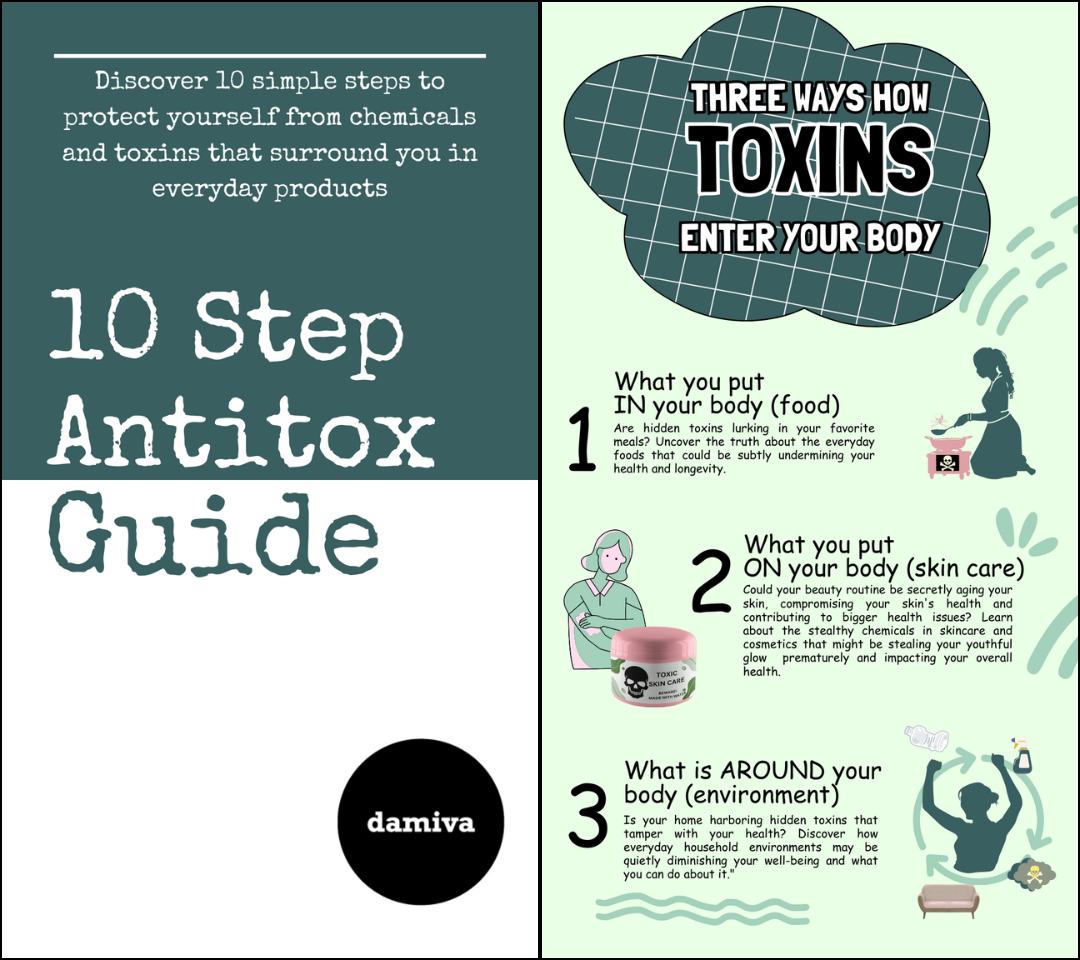
How to Choose Hormone-Friendly Shampoos
Reading Labels and Understanding Ingredients
Choosing a hormone-friendly shampoo starts with understanding the ingredients listed on the label. Many harmful chemicals can be hidden under complex names, so it’s crucial to know what to look for. **Parabens**, for instance, are often listed as methylparaben, propylparaben, isoparaben, or butylparaben. **Phthalates** might be hidden under the term “fragrance” or “parfum.” **Sulfates** like sodium lauryl sulfate (SLS) and sodium laureth sulfate (SLES) are common foaming agents that can disrupt hormones. **Formaldehyde-releasing preservatives** such as DMDM hydantoin and quaternium-15 are also best avoided. Always opt for products that explicitly state they are free from these harmful chemicals.
Natural and Organic Alternatives
Switching to natural and organic shampoos can significantly reduce your exposure to endocrine disruptors. Look for products that are certified organic or have labels like USDA Organic, Non-GMO, or Environmental Working Group (EWG) verified. These certifications indicate that the products have passed stringent guidelines and are free from harmful chemicals. Brands like **Acala**, **Wearth London**, and **Eco Roots** offer a range of natural and organic shampoos that are free from parabens, phthalates, sulfates, and synthetic fragrances. These products often use plant-based ingredients and essential oils, which are gentler on your hair and scalp.
DIY Shampoo Recipes
Making your own shampoo at home is another excellent way to ensure you’re using hormone-friendly products. Here are a couple of simple recipes:
1. **Baking Soda Shampoo**:
– 1 tablespoon of baking soda
– 1 cup of water
– Mix and apply to wet hair, then rinse thoroughly.
2. **Apple Cider Vinegar Rinse**:
– 1 tablespoon of apple cider vinegar
– 1 cup of water
– Use as a rinse after shampooing to balance the scalp’s pH and add shine.
3. **Coconut Milk Shampoo**:
– 1/4 cup of coconut milk
– 1/4 cup of liquid castile soap
– 1/2 teaspoon of vitamin E oil
– 10-15 drops of essential oil (like lavender or tea tree)
– Mix and store in a bottle. Shake well before each use.
Tips for Transitioning to Natural Shampoos
Transitioning to natural shampoos can take some time, as your hair and scalp adjust to the absence of harsh chemicals. Here are some tips to make the switch smoother:
1. **Gradual Transition**: Start by alternating between your regular shampoo and the natural one. Gradually increase the frequency of the natural shampoo until you use it exclusively.
2. **Clarify Your Hair**: Before making the switch, use a clarifying shampoo to remove any buildup from your hair. This will help the natural shampoo work more effectively.
3. **Be Patient**: Your hair might feel greasy or heavy initially as it adjusts. This is normal and usually resolves within a few weeks.
4. **Use a Vinegar Rinse**: An apple cider vinegar rinse can help remove residue and balance your scalp’s pH, making the transition easier.
By reading labels, opting for natural and organic alternatives, trying DIY recipes, and following these transition tips, you can significantly reduce your exposure to harmful chemicals and choose hormone-friendly shampoos that promote better health.
Conclusion
Recap of Key Points
Throughout this article, we’ve delved into the complex relationship between the ingredients in your shampoo and your hormonal health. We began by understanding what hormones are and their crucial role in women’s health. We then explored the concept of endocrine disruptors—chemicals that can interfere with your body’s hormonal balance. Common sources of these disruptors include everyday products like shampoos, which often contain harmful ingredients such as parabens, phthalates, sulfates, and synthetic fragrances. Scientific evidence has shown that these chemicals can lead to hormonal imbalances, manifesting in various physical, emotional, and long-term health symptoms. Finally, we discussed practical steps to choose hormone-friendly shampoos, including reading labels, opting for natural and organic alternatives, and even making your own DIY shampoos.
Empowering Yourself with Knowledge
Knowledge is power, especially when it comes to your health. Understanding the potential risks associated with the ingredients in your shampoo allows you to make informed decisions. By being aware of what endocrine disruptors are and how they can affect your body, you can take proactive steps to minimize your exposure. This awareness extends beyond just shampoos to other personal care products, food packaging, and even household items. The more you know, the better equipped you are to protect yourself and your loved ones from harmful chemicals.
Taking Action for Better Health
Taking action starts with small, manageable steps. Begin by scrutinizing the labels of your current shampoo and other personal care products. Look for harmful ingredients like parabens, phthalates, sulfates, and synthetic fragrances, and consider replacing them with natural or organic alternatives. You can also explore DIY shampoo recipes that use simple, natural ingredients. Transitioning to hormone-friendly shampoos may take some time, but your health is worth the effort. Additionally, consider broader lifestyle changes such as reducing plastic use, choosing organic foods, and minimizing exposure to other known endocrine disruptors.
In conclusion, while it may be impossible to completely eliminate exposure to endocrine disruptors, you can significantly reduce your risk by making informed choices. By understanding the ingredients in your shampoo and opting for safer alternatives, you take a crucial step towards better hormonal health. Empower yourself with knowledge, take actionable steps, and prioritize your well-being. Your hormones—and your overall health—will thank you.

